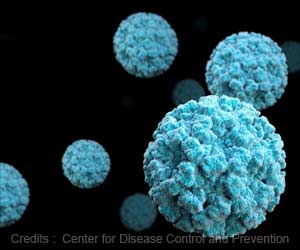OM-85 is a bacterial lysate, a combination of molecules extracted from the cell walls of bacteria, marketed outside the U.S. under the brand name Broncho Vaxom as a preventive treatment for upper respiratory infections in children and adults.
“Current infection prevention strategies rely on vaccines that trigger our immune system to respond primarily by producing antibodies. The antibodies attach to a specific part of the virus that acts like the key and prevent it from being able to attach to the lung cell receptor, which is like a lock on the outside of the lung cell.
Researchers have targeted the receptorthe lockwith a bacterial extract and shown it protects against infection with live virus for the first time.
We’re essentially removing the lock from the cell wall so there’s nothing for the virus’ key to attach to,” said senior author Dr. Donata Vercelli, professor of cellular and molecular medicine at the UArizona College of MedicineTucson and professor of genetics at the BIO5 Institute.
When the pandemic began, Vercelli and Vadim Pivniouk, associate professor in the Department of Cellular and Molecular Medicine, along with other members of the research team, turned to data they collected in an asthma prevention study to determine whether OM-85 treatment affected the ACE2 receptor and enzyme involved in COVID-19.
Vercelli found that pretreatment of cells with OM-85 prevented infection by SARS-CoV-2. The ability of OM-85 to prevent viral infection was found to be dependent on its ability to decrease the expression of the ACE2 receptor.
“ACE2 is the critical piece that tips the scale,” said Vercelli, who also serves as director for molecular genomics at the Asthma and Airway Disease Research Center. “Without that initial attachmentthe key fitting into a lockthe entire infectious process is derailed and blocked.”
By targeting the receptor, OM-85 may shut the very door that allows the coronavirus to infect cells, which could make it effective against any variants that infect cells through the ACE2 receptor.
“Original studies of this type require us to test whether infection by the live virus can be blocked by the potential preventive treatment in question,” Nikolich-Zugich said.
“This must be done in specialized biosafety containment facilities, so our long-time experience with this type of work and our biosafety facility at BIO5 enabled us to help Dr. Vercelli and her team with this study.”
The rationale for using bacterial extracts to prevent viral infection relates to a previous study led by Vercelli, who also is the director of the Arizona Center for the Biology of Complex Diseases.
“Our innate immune system has evolved under environmental pressures like bacteria, but our current lifestyles often don’t give us the chance to develop this protective immunity,” Vercelli said.
“Our idea is to use bacterial lysate to train our immune system to protect us from viruses, in the same way those who are regularly exposed to farm animals are protected against a multitude of bacteria and other microbes.”
According to Vercelli, treatment with bacterial lysates such as OM-85 could promote a more interactive exchange between the immune system and microbes.
Source: Medindia



